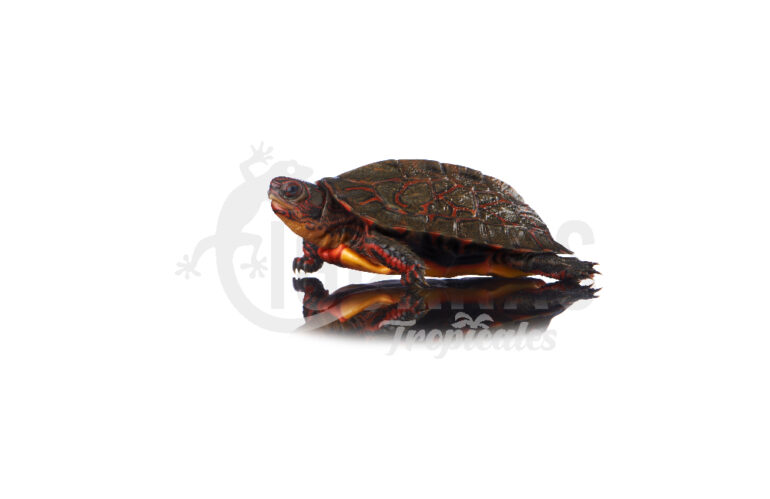The Painted Wood Turtle is a popular pet turtle species that is native to Central America. They are known for their vibrant colors and playful personality. With proper care and maintenance, these turtles can live for more than 20 years.
Habitat:
A spacious and well-ventilated terrarium is necessary for Painted Wood Turtles. A minimum of 40-gallon tank is required for one adult turtle. The enclosure should have a basking area with a heat lamp, a water area, and a hiding spot. The temperature should be maintained at 80-85°F on the warm side and 70-75°F on the cool side. The humidity level should be around 60%.
Substrate:
Painted Wood Turtles require exposure to UVB light for the synthesis of Vitamin D3 that is essential for the absorption of calcium. It is recommended to provide a UVB bulb with a strength of at least 5.0 or higher. The light should be placed at a distance of 12 inches above the basking area and should be replaced every 6-12 months.
Feeding:
Painted Wood Turtles are omnivores and eat a variety of food including insects, earthworms, snails, and vegetables. A balanced diet should be provided which consists of 60-70% animal matter and 30-40% plant matter. Dust the food with a calcium supplement at least twice a week and a vitamin supplement once a week.
Water:
Freshwater should be provided for the turtle to swim, soak and drink. The water should be kept clean and replaced every two days. The depth of the water should be at least the length of the turtle.
Behavior and Handling:
Painted Wood Turtles are social and active during the day. They enjoy basking under the heat lamp, swimming, and exploring their environment. Turtles should be handled gently and infrequently to avoid stress.
Health Concerns:
Some common health concerns of Painted Wood Turtles include shell rot, respiratory infections, and parasites. Regular visits to a veterinarian experienced in reptile care is recommended.
Providing a proper and suitable environment is essential for the health and well-being of Painted Wood Turtles. With proper care and attention, these turtles can make fascinating and long-lived pets.

